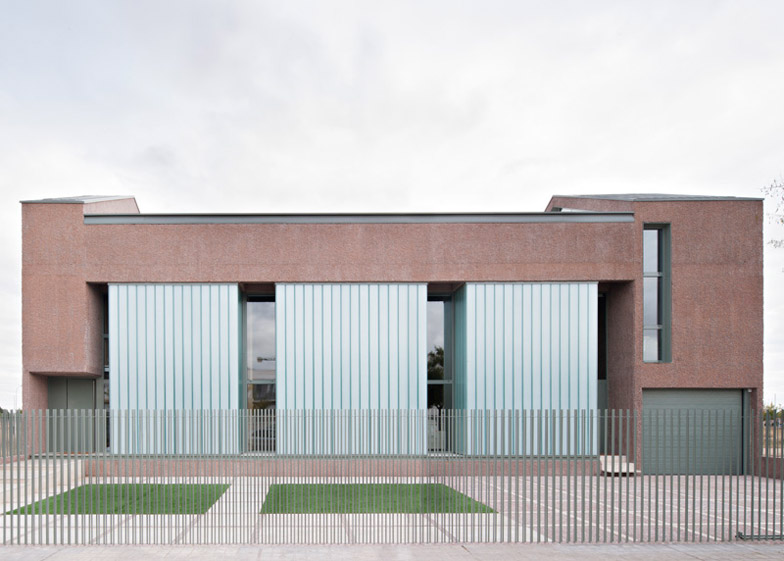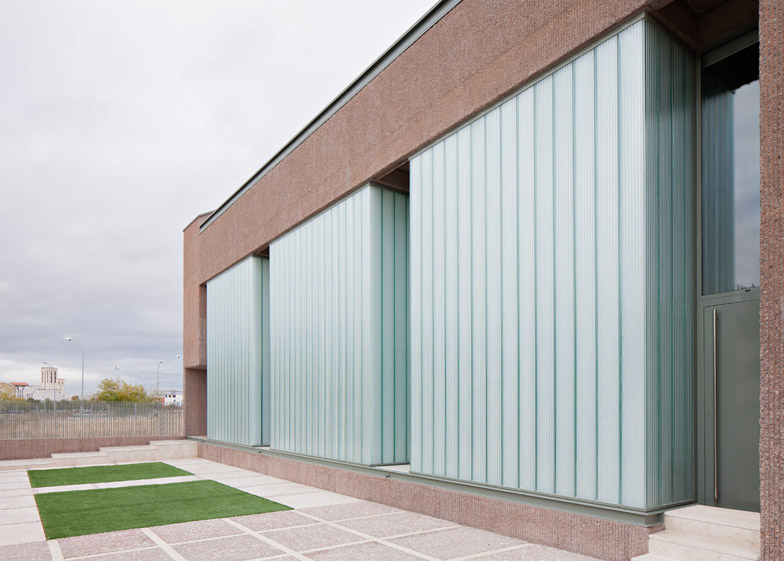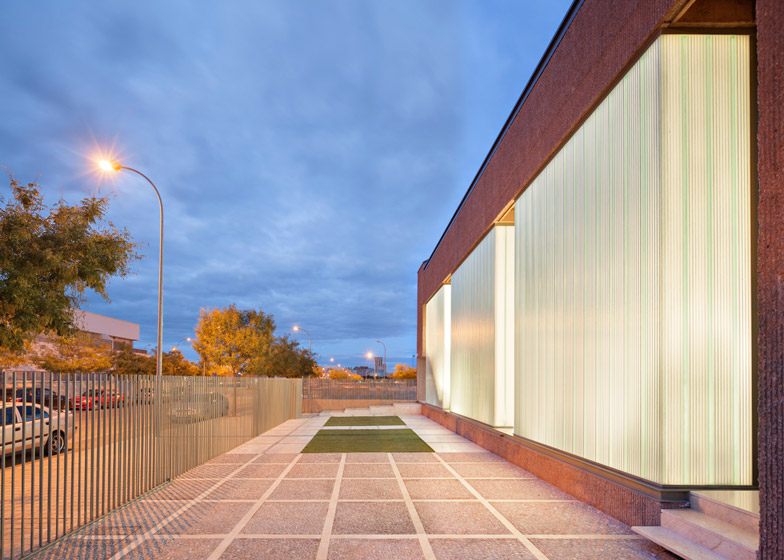Muka Arquitectura's ribbed concrete residence completes the "first piece of the urban puzzle" for a largely undeveloped area of the Spanish city Ciudad Real (+ slideshow).
The local branch of Muka Arquitectura designed the Fuensanta House for a solitary plot on outskirts of Ciudad Real.
With plans for the adjacent plots uncertain, the architects designed a fortress-like block, featuring ribbed concrete walls topped by a pitched roof, which rests on two chunky abutments that project above the structure. A small doorway is recessed into the brown concrete facade.
"Due to the uncertainty of the formal volumetry of the adjoining plots, still unbuilt, and compulsory abutment on both ends for this row-house type, we decided to raise two volumes of 3.6 and 1.8 meters wide respectively at each end of the plot," explained the architects.
Three delicate glass boxes run the height of the facade, housing a bathroom, bar and staircase. White frosted glass, with a ridged texture that resonates with the concrete, veils the spaces while allowing light to penetrate the plan.
"Any reference to the domestic dimension of the elements is hidden," said the architects. "There are no surrounding houses, typological references or architectural legacy that could serve at some point as an architectural tool in the design of the house."
"The project will acquire complete sense once the rest of the plots around the house will be built. Meanwhile, the first piece of the urban puzzle forms the first notes of the urban melody in Ciudad Real," they added.
A double-height void cuts through the core of the building. A narrow galley kitchen and adjoining dining room are set to one side of this space, with a toilet and storage room located directly below at basement-level. A reception room, garage and utility room are located on the other.
Porthole skylights are punched through the concrete ceiling and wall of the kitchen, casting shafts of the light onto the walls.
The atrium is crossed by a hanging corridor that connects a master bedroom located in the larger of the side blocks, with a sauna in the other.
Strips of light shine through slits in the steel base plate of the elevated walkway, which is attached to the ceiling by a row of metal cables.
Sunlight entering the building through the three glass bays in the facade creates patterns on the textured concrete walls that line the space.
"The ocher broken concrete has a magnificent contrast with light and shadows," said the architects. "The housing offers a palette of colours and intensities that varies along the day."
Four concrete cuboids are set behind the walkway, filling the space between the two end blocks. Two contain double-height bedrooms lined with wood panels that were designed to emphasise the verticality of the space, according to the architects.
The other two blocks, which host two-storey spaces with bathrooms at ground level and studies above, are conjoined to the bedrooms.
Curved metal rungs ascend the sheer wooden walls in the bedrooms to glass-fronted perches that protrude from each study.
A strip of glazing cuts through the back wall of each bedroom cubicle, providing light from the building's rear facade, and trio of teardrop-shaped bulbs also hangs over each of the spaces.
Up-lights run around the exterior of the four volumes, highlighting the crevices and chips in the concrete walls.
"Artificial lighting highlights a series of cracks in the concrete, as seamless, continuous strips where low-consumption lighting LEDs are located," said the architects.
Project credits:
Architectural studio: Muka Arquitectura
Architect: Moisés Royo Márquez
Collaborators: María Bona, Adelina de la Cruz, Martin Jario, Alberto Martin





